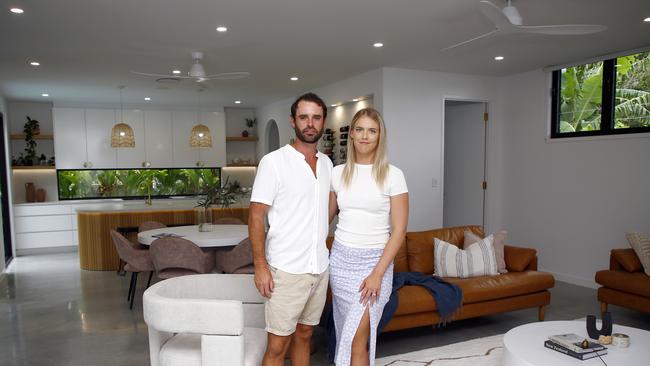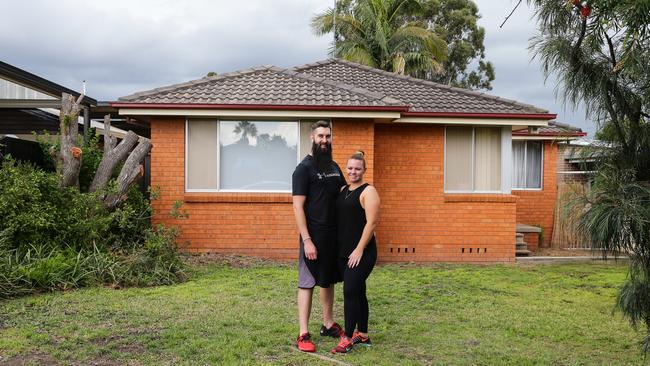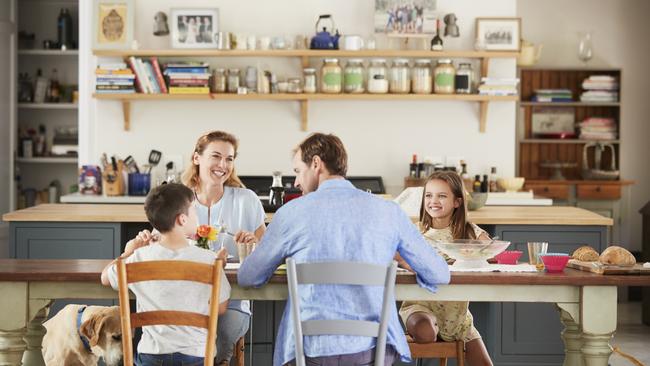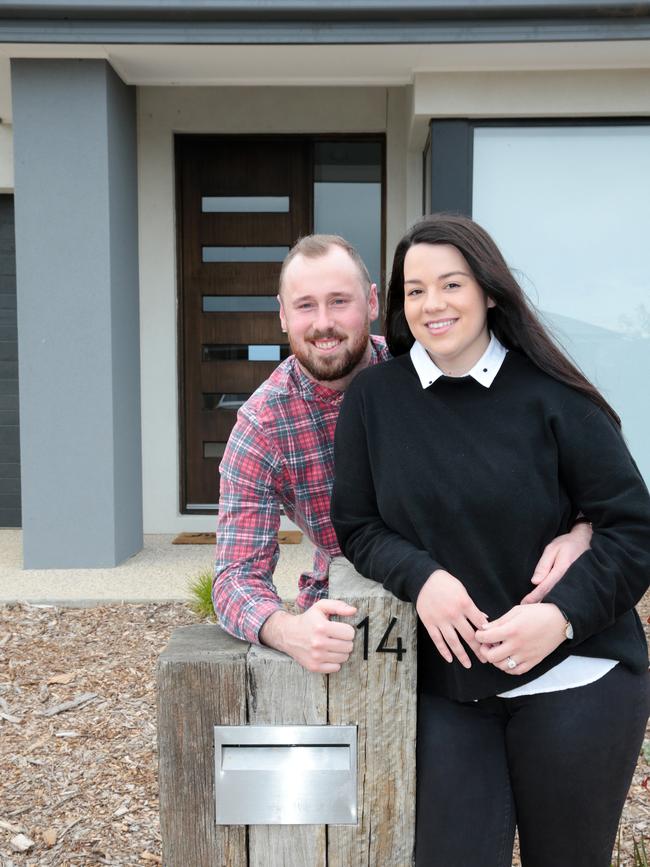The decade ahead: Millennial spending, lifestyle shifts, suburban makeovers
We look into the decade ahead for the workforce, for consumers, for those seeking home ownership. Here’s everything you need to know.

If you are working on a strategic plan scoping the outlook for your Australian property (or other) business then this graphic should be included (and fairly acknowledged) in the plan.
Australia is and will remain a growth market
The chart speaks to the supply of labour and to likely trends in consumer spending over the coming decade. Australia is a growing nation driven largely by generous levels of net overseas migration. This means that the labour pool, the tax base, and the consumer spending market will be bigger in 2035 than it is in 2025.
This ‘rosy outlook’ is not the case in places like Japan, South Korea, Russia and China. And more to the point, whereas the working/spending/taxpaying component of other nation’s population will contract across the 21st century, this component of the Australian population is expected to continue to expand. This outlook and demographic context needs to be made clear to overseas investors in the Australian property market and in Australia more generally.
The attached chart has been constructed using data released by the Centre for Population in November 2024. I like this dataset because it postdates the ABS projections released two years earlier. Theoretically the CFP’s (later) assumptions should better reflect the outlook for the post pandemic world.
The bottom line is this. The CFP is projecting net growth of 3.6 million over the decade to 2035 or a flat average of 360,000 pa. Over the previous decade (to June 2024) the actual net growth of the Australian population was 3.7 million. The percentage rate of growth is projected to slow from 1.6 per cent per annum to 1.3 per cent per annum.
However when considering the impact of population projections on the depth of the labour pool and/or the consumer spending market the issue isn’t so much the quantum of growth (it’s likely to range between 1.3 and, say, 1.6 per cent pa) it’s the rise and fall of critical cohorts (some say generations). And that’s what is so valuable about this chart: its age-based lumps show where spending is set to surge!

Cohorts on the move … kids and students
There are more Australians expected in every year of the life cycle in 2035 than in 2025 except between the ages of 9 and 12. This reflects the fall in birthrates around the time of the pandemic. However the number of young kids (0-6 years) in 2035 will surge above current levels as more 2030-families choose to have even just one child.
The labour pool (aged 15-65) cohort is boosted by incoming international students across the 20s and is strengthened by Millennials (born 1984-2002) shuffling from late-20 and 30s (over the last decade) into the late-30s and 40s over the next decade.
This is a critical shift affecting the labour pool, the spending market and consumer behaviour.
Over the last decade (and more) the Millennials transitioned from living at home with mum and dad in their 20s to living in student digs, then to renting apartments as singles or couples, and then to buying a home in their 30s and especially as kids arrived.
The property business to have been in between 2008 and say 2025 was the development of apartments which suited single, often-professional, city-loving eco-friendly Millennials. Early within this era, such was the authority of this generation that a new term evolved to encapsulate their values and their behaviour: these were ‘hipsters.’

Millennials in their 40s
Over the decade to 2035 however this lot will transition from singledom and coupledom to family life, and thus from hip apartmentia to lifestyle suburbia. It’s all very well as a single or as a professional couple to live in a chic minimalist apartment — with clean and clear surfaces, everywhere — in Bondi and St Kilda, but the minute a toddling toddler arrives (replete with obligatory Lego) it’s not possible to maintain even the pretence of minimalism. (Is there a design term called messyism?)
The middle bump (in the 40s) in the (attached) next-decade chart signals a fundamental shift in consumer preferences: out with apartments, in with separate houses on separate blocks of land. I do realise this assessment is anathema to planners who are busily facilitating transport oriented medium-rise apartment zones in Sydney, Melbourne and possibly Brisbane. However I think that the Australian market is about to switch direction.
This is not to say that there won’t be demand for more apartments (see the coming surge in single and/or toddlerless 20-somethings), but rather that today’s young families with toddlers will want their Aussie kid-friendly birthright namely a separate house on a separate block of land. Indeed it could be that daggy Darryl Kerrigan was right all along about his glorious suburban castle.
But I am sure that Millennials will boldly reimagine middle and outer suburbia as well as the idea of acreage allotments beyond the urban fringe. These places aren’t the dreary origin points for hapless long-range commuters. No, these will be the locales for luxuriant lifestyle homes. Indeed, out with the concept of the energy-consuming McMansion, in with the idea of a Millennial lifestyle home replete with solar panels, a parked EV or two, some water harvesting facilities (aka water tanks) and space for a self-sustaining organic foods garden.

Work from home not going anywhere
At the centre of this lifestyle home is of course the mandatory kitchen-family room but in a quiet corner somewhere, or perhaps in a dedicated space there’s Covid’s contribution to Australian housing design, the Zoom room. Now I do understand that President Trump has recently mandated federal employees to return to work. And I am sure that CBD-interests in Australia will read this as a forerunner to similar mandates in Australia.
But there is a difference. Australians are obsessed (and have always been obsessed) with lifestyle, and having had the option of working from home for almost five years Aussie workers will be less inclined (than Americans) to return to commuting. My expectation is that the 2026 Census will show a 10-percentage-point uplift in the long-term proportion (5 per cent) of workers working from home (including hybrid).
In the brave new world scoped out in the attached chart the cohorts projected to grow most over the coming decade — according to both the CFP and the ABS — is the population aged 45 and 46 which over the 10 years to 2024 increased by 14,000 each, but which over the 10 years to 2035 is expected to jump by 86,000 each. That’s a sixfold increase. but of course it’s not just 45 and 46 that is set to skyrocket it is more or less the whole of the 40s. The Millennials are spilling into their 40s!
Now I wonder what it is that 40-somethings are most likely to spend their money on?
The biggest, the most consequential generation since the coming of the baby boomers — the Millennials — will pass through a phase in the life cycle when they achieve peak-earning and generate peak-spending all over the decade to 2035. Here are the demographic makings of a consumer spending boom that will propel the coming generation of 40-somethings (the Millennials), and their families, towards the acquisition and adornment of a lifestyle home.

Makeover Millennials reimagine middle suburbia
It’s true that some Millennials will view their 40-something family-friendly forever home as a swish city apartment. However I think a far bigger market will be the Millennial makeover of Australia’s middle suburbia. And if this were to happen then groovy cafes would start popping up in once-dreary suburban shopping strips. Popular culture and aspirational shopping instinctively follows the intoxicating scent of burgeoning spending power, you see.
A great feature for Real Commercial in 2025 would be to highlight the best examples of suburban makeovers in Australian capital cities by 40-something Millennial families. And by suburban makeovers I mean a 1950s three-bedroom one-bathroom dwelling on, say, 800 sqm in places like Nunawading and Hornsby as opposed to South Yarra and Paddington. And where the makeover couple have names like Mia and Matthew and their kids are called Oliver and Isla.
The coming decade as suggested by a simple and yet profound bar chart will surely be a decade of heightened consumer spending, of generational creativity, and of a bold reimagining of how and where we live.
Common values in how we want to live
And yet underpinning it all is a common thread that has woven its way through Australian housing I think for more than 100 years. And that is the irrepressible pursuit of, and yearning for, lifestyle.
Returning Diggers thought they had won the lottery with their Darryl Kerrigan three-bedroom/one-bathroom house from the 1950s.
Baby Boomers thought they had it with their ‘back extension’ in the 1990s that delivered the revolutionary idea of kitchen-family room living.
And now, surging 40-something Millennials will surely do it too not so much by colonising new territories ever further from the CBD (although that is still an option), but rather by making over and reimagining housing assets to meet the requirements of modern family living and technology in the late 2020s and early 2030s.
Bernard Salt AM is founder and executive director of The Demographics Group; data and graphic by data scientist and speaker Hari Hara Priya Kannan.




It may look like an ordinary bar chart but it is actually a crystal ball because it provides insight into the decade ahead for the workforce, for consumers, for those seeking home ownership. It is a chart that tracks the projected net change in the Australian population by single year of age over the decade to 2035.